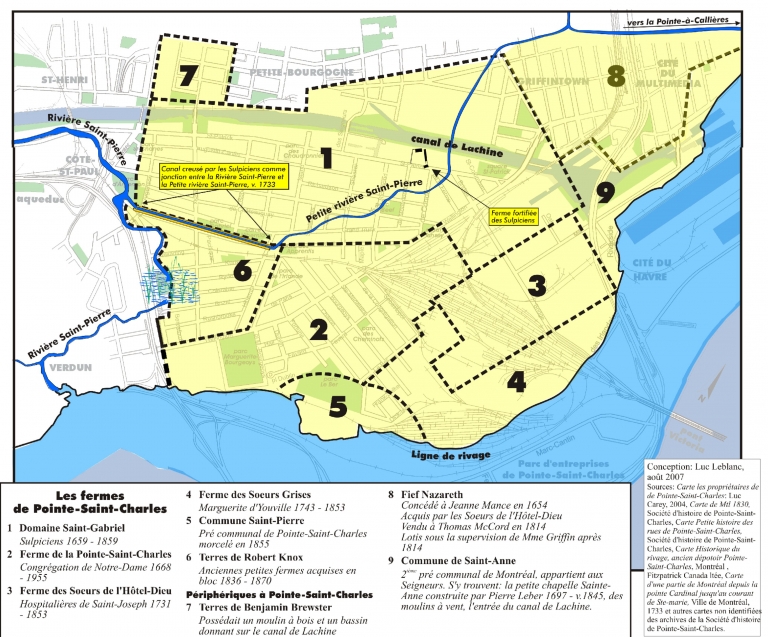This map was created by Luc Carey and adapted by Luc Leblanc of the Société d’histoire de Pointe-Saint-Charles. It shows the original shape of the shore of the St. Lawrence River and the location of the farms, most of which belonged to religious communities.The Sulpicians, the Hospitalières de Saint-Joseph, the Congrégation de Notre-Dame and the Gray Nuns of Montréal owned land there that was used to feed their communities and many Montrealers.
Teiontiakon
In the 17th and 18th centuries, someone at the tip of the Point would be walking in a swamp. In fact, the shore of the St. Lawrence River was very swampy. In the spring and the fall, there were thousands of wild geese there. In the summer, it was a paradise for mosquitoes.This site was a hunting ground that was important for the First Nations peoples. They called it Teiontiakon. A little further west on this point, Ville-Marie, now Montréal, could be seen.
The Point was named Pointe-Saint-Charles after Charles Le Moyne, the first owner of the land and an extraordinary businessman. He became the richest man in Montréal in the 17th century.
The beginnings
This land, which was enriched by the deposits of the river, was very productive and its proximity to the water meant that Montrealers could obtain water quickly. A few houses were built. The village landscape was traditional, with stone houses, a church nearby and a tightly woven francophone community.
There as a common property on the site of Parc LeBer, namely a piece of land that belonged to all and was called a commons. Anyone could come here to let their animals graze, to fish, to hunt... and to admire the magnificent landscape of the river and Île Saint-Paul, just opposite. This rural landscape, shaped by the large farms, lasted after the British conquest, but it changed incredibly as a result of the economic growth experienced by the region and, above all, the large Lachine Canal project, which started in 1821.

